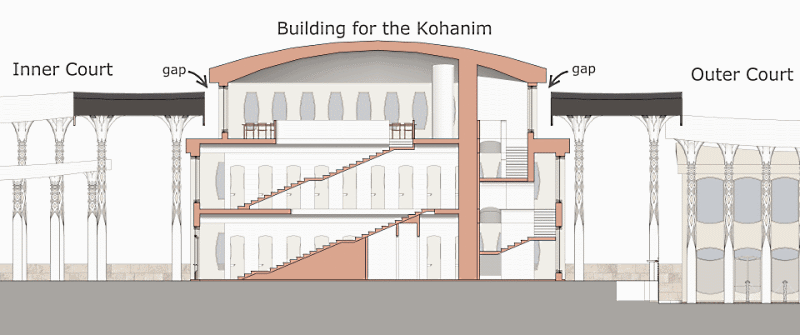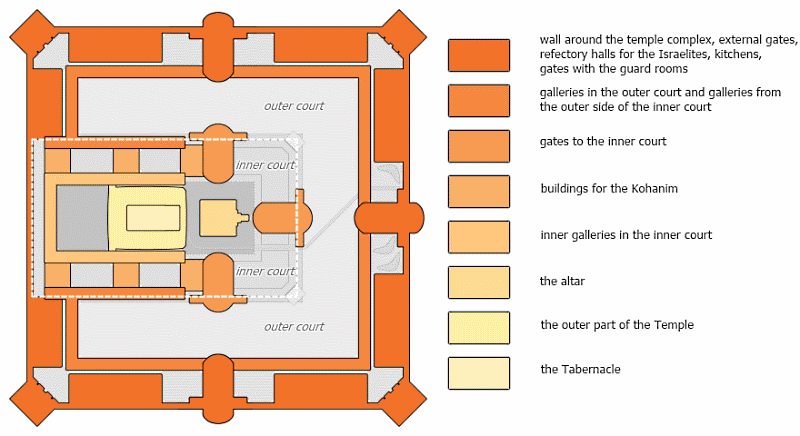|
Andrew |
Date: Friday, 24.05.2019, 19:34 |
Post # 1 |

Group: Administrators
Posts: 703
Status: Offline
|
If one bear holy flesh in the skirt of his garment, and with his skirt do touch bread, or pottage, or wine, or oil, or any meat, shall it be holy? And the priests answered and said, No.
Then said Haggai, If [one that is] unclean by a dead body touch any of these, shall it be unclean? And the priests answered and said, It shall be unclean.
(Haggai 2:12,13)
If two or more buildings are in contact with each other, or have a common element, the level of holiness of these buildings will be the same and it will be equal to the level of holiness of the building having the smallest level of holiness.
For this reason, the Tabernacle (the inner part of the Temple) has a separate foundation, and the wall of the Tabernacle should not come into contact with the wall of the outer part of the Temple, where the storerooms are located.
And the side chambers were three, one over another, and thirty in order; and they entered into the wall which was of the house for the side chambers round about, that they might have hold, but they had not hold in the wall of the house.
(Ezekiel 41:6)
The "wall of the house" is the wall of the Tabernacle; it is 6 cubits thick. The wall at the rooms located in the outer part of the Temple is 5 cubits. There must be a gap between these walls.

Similarly, the gap should be between the galleries of the inner court and the buildings for Kohanim.

The buildings of the temple complex can be combined into several groups with varying degrees of holiness.

Especially it is necessary to note the need for autonomous power supply for each of these groups of buildings. Of course, we need to take care of autonomous water supply and sewage.
|
|
| |
| |






















